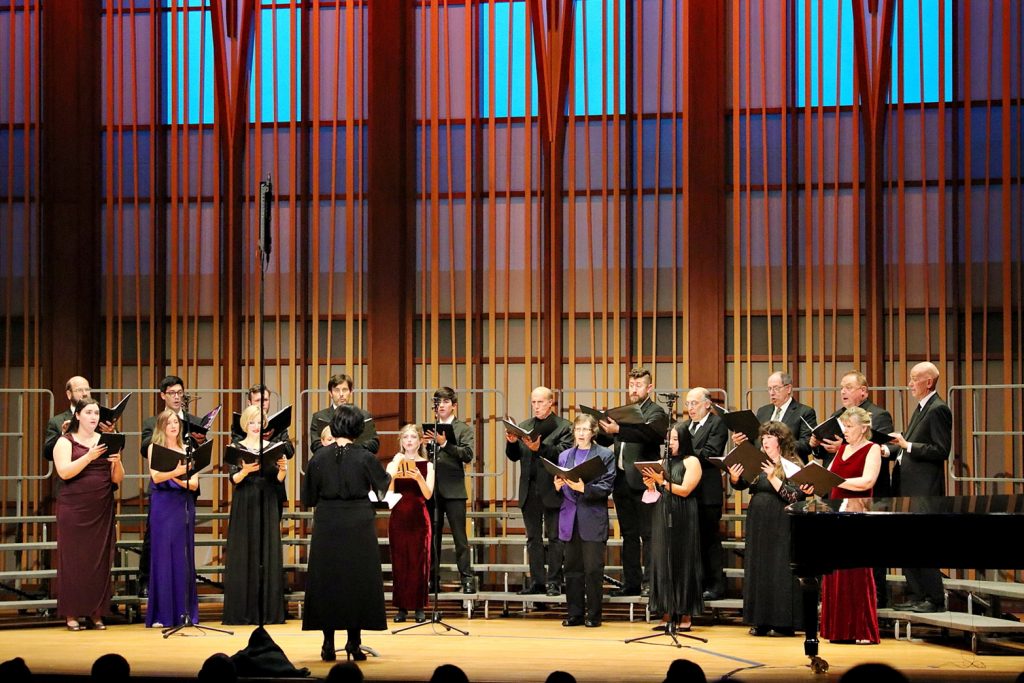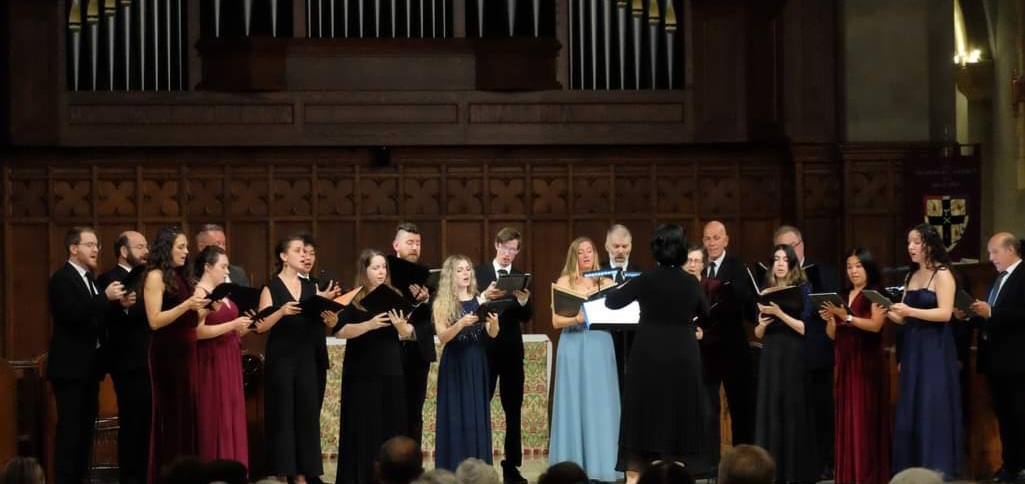Written by Dawn Richards
The historic interlacing of snowy white winters with the holiday season has become so established that even the most arid areas risk falling under its sway. And, though our winters be mild, Coronado’s Musica Vitale will bring that enchantment to us in not just one, but two concerts. Oratorio de Noël will be offered Saturday, December 9, at 7 pm at St. Paul’s Episcopal Cathedral in Banker’s Hill, and at Coronado’s Christ Episcopal Church on Sunday, December 10, at 7 pm.

The entrancing commingling of light-filled festivities and the dark chill of winter will be explored through the music of composers from Western and Eastern Europe, where mystical traditions of winter have been firmly entrenched in the folklore for thousands of years. The concert’s first eclectic mix of songs from Ukraine, Armenia, Estonia, and Russia will take the audience on a journey through the differing traditions celebrating winter, based on early texts and folk music.
Of particular interest is Soviet/Armenian composer Aram Khachaturian, often hailed as “the ambassador of contemporary Armenian music,” who melded historic folk songs in his arrangements from Central and Eastern Europe, as well as parts of the Middle East. His Spartacus and Gayaneh (Sabre Dance) ballets are perhaps his most familiar works.

The concert’s second section promises a magical musical tour of Germany and France. The beauty and timelessness of Felix Mendelssohn’s Ave Maria derives from a prayer to the Virgin Mary, and continues to be an audience favorite from the Romantic era when it was first published in 1830.
Camille Saint-Saëns’ Oratorio de Noël, also of the Romantic period, takes the title role. As Elena Vizuet, Founder and Creative Director of Musica Vitale explains, an oratorio is akin to a mini opera without staging, and typically more graceful and elegant than the more weighty operas. Also based on Biblical texts, it’s theorized it was first performed in Paris for the Midnight Mass of the Church of La Madeleine in 1858, when the composer was just 23 years old. A veteran traveler whose experiences were reflected in his music, he wrote the Oratorio in just ten days.
Throughout history, winter has symbolized the dichotomies of the human condition, characterizing death, which also leads to rebirth. Aging, sorrow, loneliness, and bitterness are associated with the season in folklore, poetry, art, and music. Yet, paradoxically, the ancient symbols of winter can also embody joy and new beginnings. The holly’s red berries, for example, are a symbol of hope, while snowflakes represent purity.
Oratorio de Noël will encompass these symbols not only from the songs’ folkloric backgrounds, but also through the performances’ blend of solos and choruses, both a cappella and with accompanying strings, harp, and organ, plus a short instrumental medley.
Elena Vizuet, musing on the concert’s themes, suggests that ever since the pandemic, we have a need to hear music that is reflective of nature, which helps unite us and bring differing cultures together. “Such music is like another language with different tones and flavor,” she says. “It’s so much fun!”
Written by Dawn Richards




